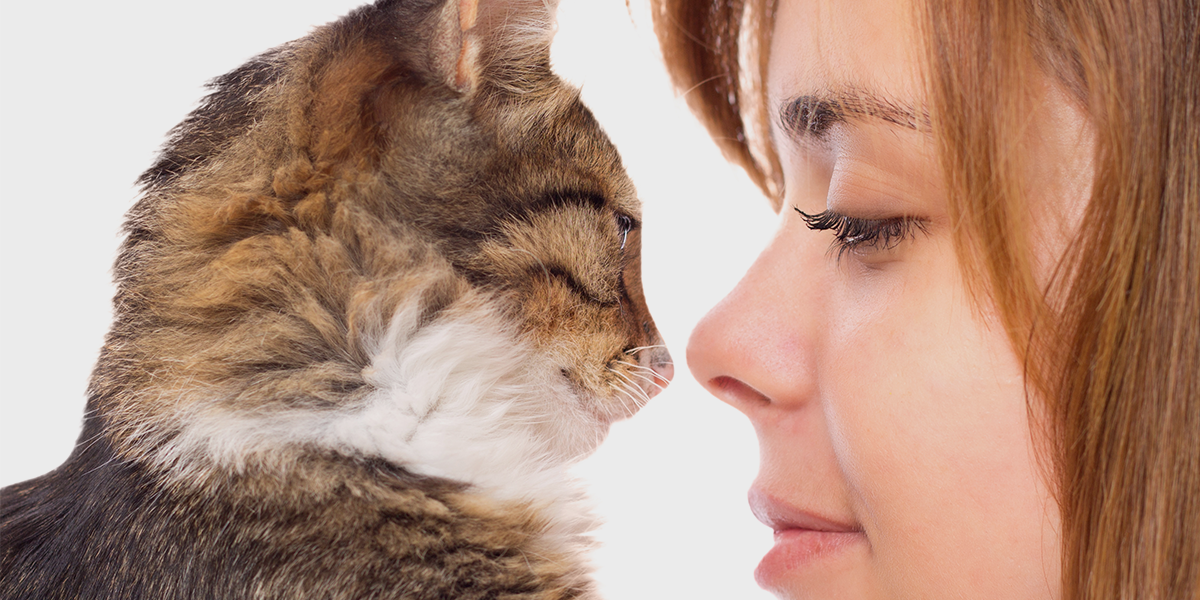Diseases which can pass between animals and people are called zoonoses and there are some which are transmissible from cats to man (and vice versa). Although these hazards are few, you need to take precautions and be aware that there can be a problem.
Fortunately, most feline zoonotic diseases are rare, although many myths exist regarding disease risks, and misinformation is often spread through ignorance or fear. In reality, many more people become sick each year from food-borne illnesses than ever fall ill from contact with cats. Practising common sense together with a good hygiene routine, including careful handling of litter trays and routine treatment of cats for fleas and other parasites, significantly reduces the possibility of disease transmission from cats to humans.
Some important zoonotic diseases
Cat bites
Bacteria in the mouths of cats and, in particular, Pasteurella multocida, can cause infection of a bite wound and result in painful swelling and even abscessation. Bite wounds should be washed carefully and immediate advice sought if swelling, pain or obvious infection occurs. Routine protection against tetanus is also an important consideration and advice should be sought from your doctor.
Fleas
Fleas are extremely common on cats and although most cat fleas cannot actually live on humans, they can bite humans and cause skin irritation. Fleas should be controlled by regular cleaning and spraying of the environment with a flea-control preparation in addition to regular treatment of all cats for fleas.
Ringworm
Ringworm (dermatophytosis) is one of the most common zoonotic diseases derived from cats. Cats should always be checked for suspicious lesions, and gloves worn if ringworm is suspected. Your veterinary surgeon can help in screening and identifying cats with suspected ringworm, and in treating any confirmed cases. It is important not to let children have direct contact with ringworm-infected cats, and careful hygiene precautions are necessary when handling such cats (disposable gloves and protective clothing). Attention must also be paid to environmental hygiene as ringworm spores are resistant and can be shed into the environment in high numbers. If any skin lesions occur after contact with cats, immediate medical advice should be sought.
See ringworm in cats
Toxoplasmosis
Toxoplasma is a parasite that infects cats and many other mammals, including humans. It is primarily a concern for pregnant women as, if infection occurs during pregnancy, damage can occur to the developing foetus. Most human infections come from poor meat hygiene (handling uncooked meat, eating undercooked meat). However, for a short period, after they are first infected, cats may shed eggs (oocysts) in their faeces, and this is another potential source of infection for humans. Because of this, it is recommended that litter trays should always be emptied and disinfected on a daily basis (the eggs don’t become infectious for humans until more than 24 hours after they are shed in the faeces) and that pregnant women are not involved in cleaning litter trays.
See toxoplasmosis in cats and man
Intestinal worms
Very rarely, humans can become infected with a cat roundworm (Toxocara cati) or the tapeworm (Dipylidium caninum). These infections are very uncommon (canine roundworm infections are more common in people), but regular worming of cats for both roundworms and tapeworms is an important part of the healthcare of cats.
See worming your cat
Campylobacter and salmonella
These are two intestinal bacteria that can be a cause of severe gastrointestinal disturbances and can affect many animals, including humans. Infection in humans is usually through the food chain and infection from cats is rare, although they can be a potential source. Everyday hygiene precautions (eg, washing hands after handling a cat) should always be followed, but particular care should be paid to handling cats with diarrhoea. If the diarrhoea is prolonged, severe, or contains blood, veterinary attention should be sought to identify the underlying cause. If campylobacter or salmonella is identified, specific treatment and monitoring may be required.
Cat scratch disease
Cat scratch disease (CSD) is a rare condition characterised by swollen lymph nodes and sometimes other signs (eg, fatigue, muscle pain, sore throat) that can occur following contact (eg, being bitten or scratched) with a cat. CSD is an uncommon disease and serious illness is very rare. The main organism responsible for this disease (Bartonella henselae) appears to be quite common in cats, but transmission to humans is very inefficient. Transmission of this organism between cats appears to occur mainly via fleas
Thank you for visiting our website, we hope you have found our information useful.
All our advice is freely accessible to everyone, wherever you are in the world. However, as a charity, we need your support to enable us to keep delivering high quality and up to date information for everyone. Please consider making a contribution, big or small, to keep our content free, accurate and relevant.
Support International Cat Care from as little £3
Thank you.
Donate Now


